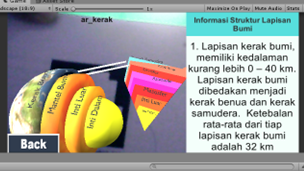Augmented Reality Technology as a Learning Media for Geography of the Earth's Layer Structure
DOI:
https://doi.org/10.55732/jikdiskomvis.v9i2.1458Keywords:
Augmented reality, Waterfall, Black box testing, GeographyAbstract
Augmented reality (AR) is a technology that can integrate virtual objects into the real world and combine the two to create a combined space that is then projected in real-time. The application of augmented reality technology in education provides an innovation in creating learning media, especially in the subject of geography of the earth's layer structure for class X at MA Mamba'ul Ulum Bedanten which has so far been carried out with conventional learning media. The purpose of this study is to use AR technology as an interesting and interactive teaching method and can increase students' desire to study the geography of the earth's layer structure material. The method used in this study is the SDLC (System Development Life Cycle) method with the waterfall model. The testing method used is the black box method with functional suitability and probability aspects. This application was created using two software, namely Blender and Unity. The results of the study are in the form of a learning media application for the geography of the earth's layer structure by implementing augmented reality technology. There are two stages of testing, namely (1) system testing including the ar Play menu button, material button, information button, and exit button; and (2) testing on users of 23 class X students of MA Mamba'ul Ulum Bedanten. The results of the AR application system testing of the earth's layer structure can function well according to the planning and testing of users showed that 18% strongly agreed, 78% agreed, and 4% strongly disagreed that the existence of learning media by implementing AR technology can increase student activity and enthusiasm in learning the material on the earth's layer structure.

Downloads
Published
Issue
Section
License
Copyright (c) 2024 Journal of Computer Science and Visual Communication Design

This work is licensed under a Creative Commons Attribution-ShareAlike 4.0 International License.






